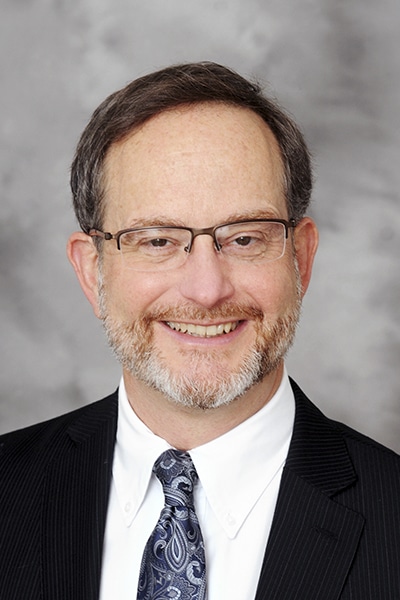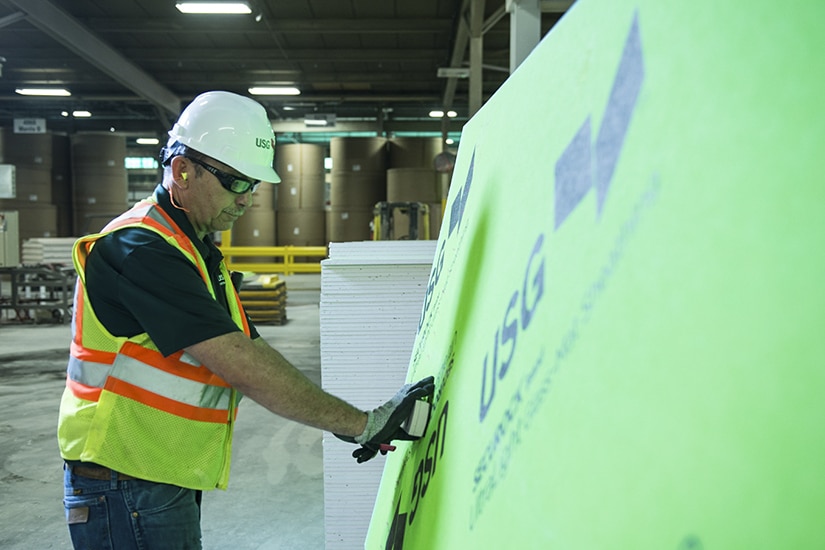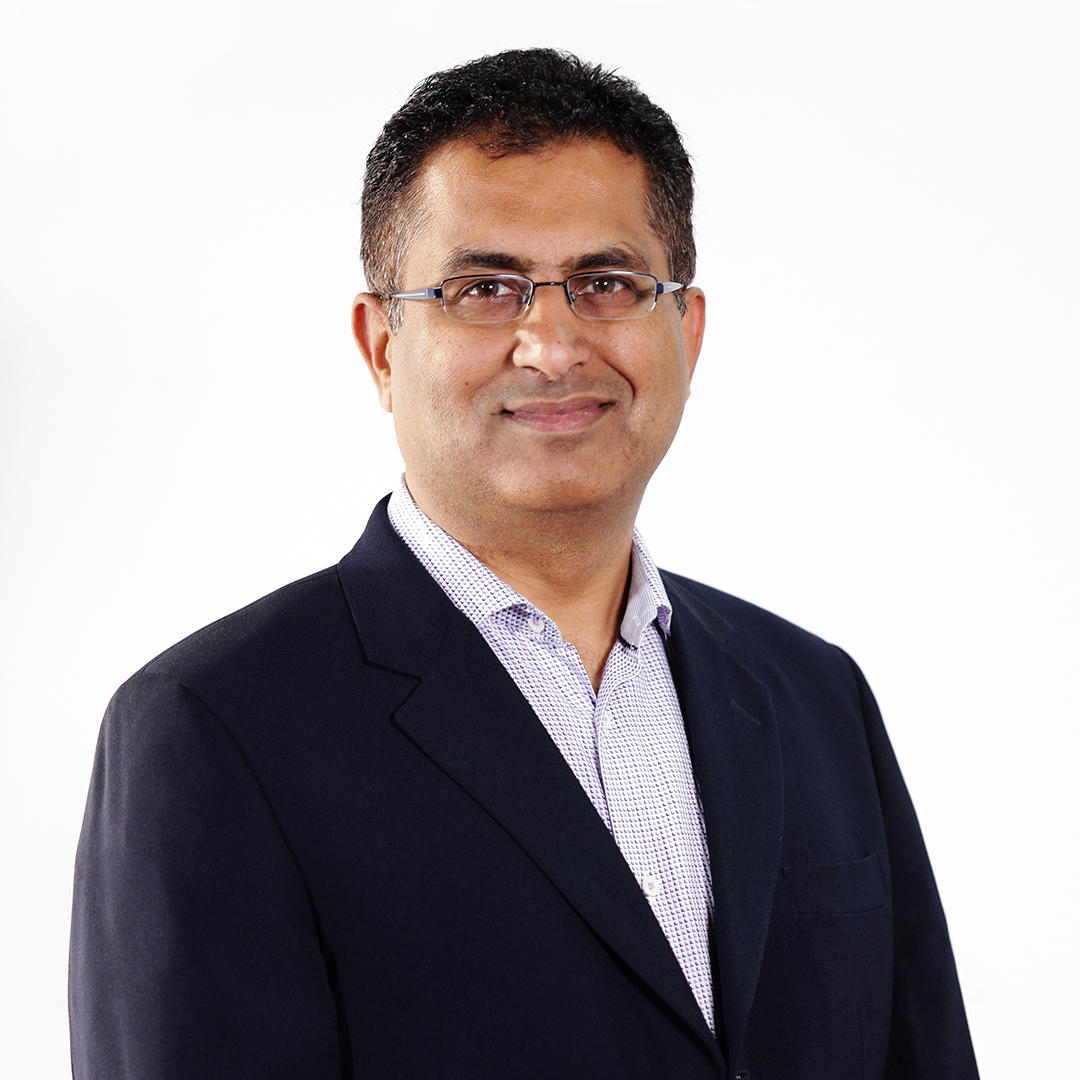For most of its 117-year history, USG Corporation was focused on North America. USG is a leading manufacturer of gypsum wallboard and several other types of building materials, with fifty-one manufacturing facilities throughout the US, Canada, and Mexico.
At the lowest point of the Great Recession, USG recognized that it would need to expand its business in those high-growth overseas markets through other means. USG turned to one of its most valuable assets—its industry-leading technology and the intellectual property protecting it. USG leveraged a combination of patents, closely held trade secrets, and strong brand identities for the company’s industry-changing products to open doors to business opportunities in Asia, Australia, and the Middle East.

The company’s chief intellectual property counsel, Philip Petti, is an important part of the team that brought this about. Petti was a successful senior partner in one of Chicago’s leading IP law firms and was drawn to USG because of its strong emphasis on innovation and intellectual property. Petti also saw the potential for USG to do more with its IP than only protect its home markets.
“Intellectual property has always been at the core of what USG does,” says Petti, who joined the company in 2008. USG owned the first patent on gypsum wallboard in the early twentieth century, which revolutionized construction by reducing the time it took to build and finish safe, fire-resistant walls and ceilings on-site. “Things we take for granted in the buildings around us were made affordable and safer by the company,” Petti says. “In many respects, our products are why tall buildings can be built. In fact, all of the top ten tallest buildings in the world use USG’s products.” To support USG’s investment in innovation, the company is granted between thirty and forty patents in the US and about three hundred such protections globally every year.
Petti is quick to give credit to USG’s research and development team as well as to those in other areas of the company, but the ability to protect and make the most of USG’s innovations—particularly in markets where IP theft is commonplace—involves heavy legal lifting.
Petti played a key role in realizing the potential of USG’s IP portfolio when USG turned to extending its international reach through a joint venture called USG Boral Building Products. It was formed in 2014 as a fifty-fifty partnership between USG and Australia-based Boral Limited, a company that already had strong manufacturing and distribution capabilities in the Austral-Asian markets. What Boral lacked was USG’s industry-leading technology, which could help raise building standards in its markets. The joint venture brought together USG’s intellectual property and Boral’s manufacturing and distribution network to offer the most advanced gypsum-based wall and ceiling systems in the fastest-growing construction markets in the world. Petti led USG’s licensing and valuation teams that built the IP framework, allowing the flow of USG technology to the new joint venture.
Although USG’s technologies contributed to the joint venture’s success in many of its markets, they are used in what might be considered several hostile territories from an IP standpoint. The Organization for Economic Cooperation and Development estimates that $461 billion in counterfeit goods were made and sold in 2017—double what it was in 2008. The worst offenders were in Pakistan, India, Algeria, and Venezuela, with China a bit better in improving IP rights and patent reforms. Still, IP theft in several of USG Boral’s markets happens on a large scale.
Which means Petti and his team have their work cut out for them. Chief among their tools are patents. “Patents allow us to stop others from using USG’s inventions until the patents expire, and this is in return for teaching the public, including our competitors, about the inventions.” That, however, doesn’t cover everything. Some of USG’s important innovations are its “trade secrets,” such as product formulas, manufacturing improvements, and similar intellectual property that is valuable because it is proprietary and confidential to USG. “If another company uses stolen trade secrets, then it is considered theft of valuable property.” Petti points out that “balancing the benefits of patent protection against the benefits of trade secret protections is an important part of our work at USG, as is ensuring that our trade secrets are protected.”
Transgressive ex-employees, spies, and hackers, in fact, are continual threats to USG and other companies with trade secrets and proprietary technological know-how, both overseas and in the US. Petti’s legal team uses nondisclosure agreements, employee training, plant security, digital tools, cybersecurity, and other measures to thwart them. These efforts are important. For example, when Petti joined USG, he took over responsibility for a lawsuit against a US competitor that had hired away key employees who left with USG’s trade secrets. The result was a $105 million settlement payment to USG by the competitor.
Petti points out how IP protection isn’t just a way to punish bad actors; it stimulates new products that serve emerging market needs. This matters in the postrecession building boom, which is characterized by two challenges: how to build with a shortage of construction labor, and how to make buildings and the construction process greener and more sustainable.
USG responded with several products that carry lower embodied energy (less energy required in sourcing, production, and distribution). In some cases, those products are easier to install, resulting in lower on-site construction costs and greater speed in building delivery.
For example, the USG Sheetrock Brand EcoSmart Panels use the company’s patented and proprietary technology that reduces use of water and fuel for manufacturing and transport—saving 1.7 billion gallons of water, 2.8 billion pounds of carbon dioxide, and 5.5 million gallons of diesel transportation fuel each year. For construction crews, the lighter product is also easier and faster to install. Another product is the Securock ExoAir 430 System, which combines USG’s exterior panels with a factory-applied vapor and air barrier coating. This creates an energy-saving building envelope with substantially reduced on-site construction costs.
In April 2019, USG was acquired by Gebr. Knauf KG, a German-based building materials manufacturer with 220 factories worldwide. The merger creates the world’s largest gypsum company, combining USG’s great legacy and talented team with the reach and resources of Knauf.
Petti sees the opportunities ahead. “Knauf is a technology leader in our industry, and we look forward to the IP opportunities and challenges that will come from our new combined company,” he says. “Together, USG and Knauf’s innovation capabilities will have a global impact.” </>



